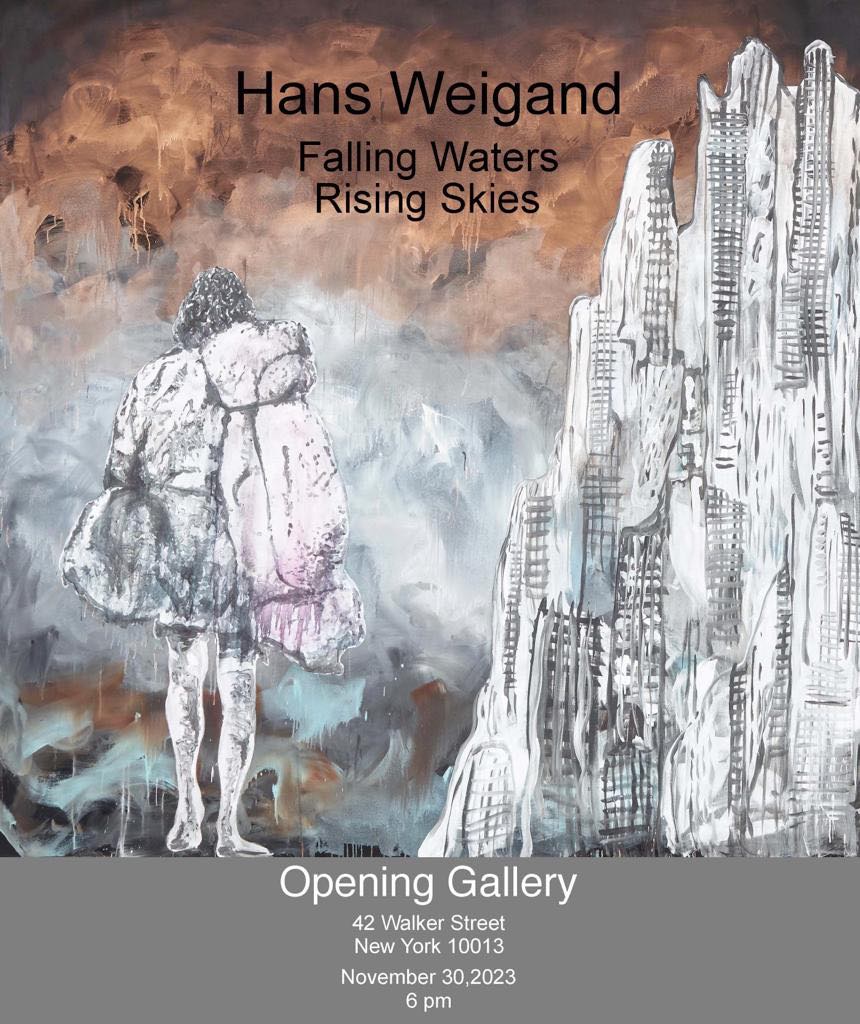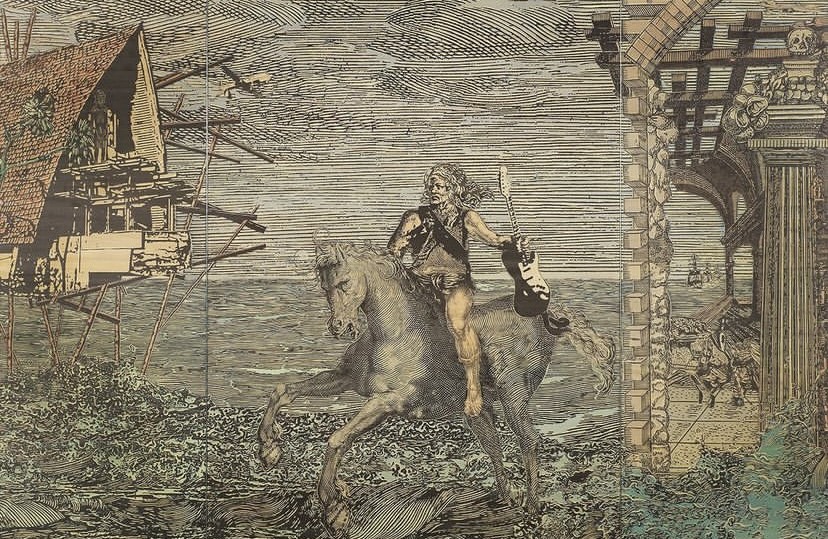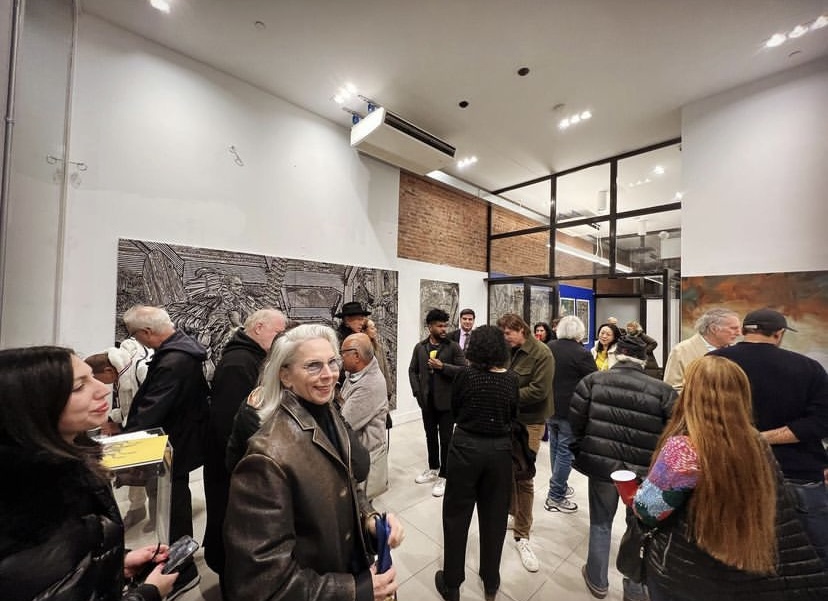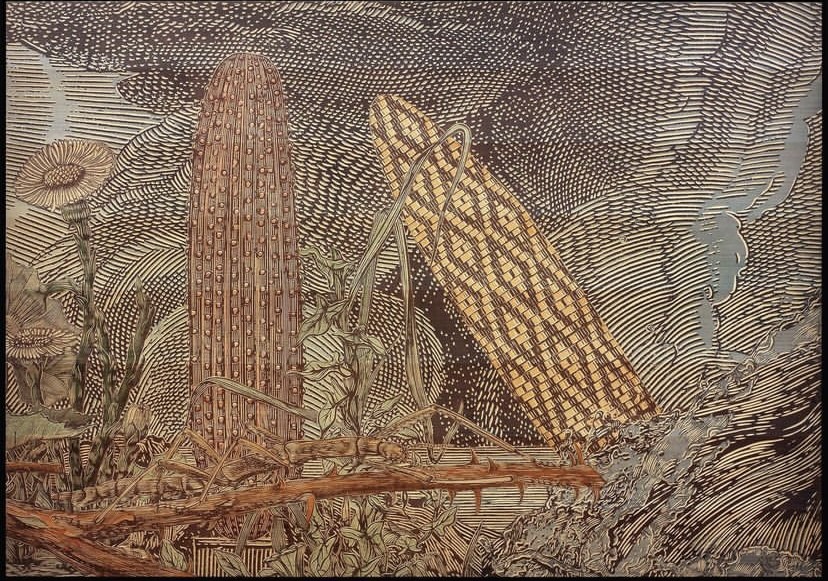The Opening Gallery is pleased to re-introduce Hans Weigand in New York with a selection of his most recent works: an insightful painter and graphic artist, he employs ancient media rich in tradition, rendering them into a contemporary context. In that same vein, the exhibition focuses on Hans Weigand as a groundbreaking artist addressing environmental, and sociopolitical issues as well as in advancing or challenging the discourse on aesthetic issues like abstraction, conceptualism and high modernism.
"Falling Waters, Rising Skies" presents Hans Weigand's paintings and woodcuts that bring together the old and the new with groundbreaking and inspiring environmental and post-colonial commentary. The exhibition encompasses contemporary motifs that collide with the imagery of old masters and traditional techniques as the woodcut realized in an essentially unconventional and contemporary fashion. Weigand works in a broad field of activity in the realm of art. His artistic universe is basically defined as interdisciplinary and multimedia-based. His work ranges from digital generated paintings, photography, graphics, sculpture, space installation, video, film to guitar rock. One has the impression of being put into a complex multilayered landscape, where the blurry element holds a central position of Weigand’s iconography.
This multi-genre exhibition presents large-scale paintings that combine elements of printing, painting, and digital art. Above all, though, this exhibition showcases the development and stance of an artist who epitomizes a decisive moment in Austrian post-war art. Following the tradition of Oswald Oberhuber, Weigand adopts the principle of “permanent change in art” and traces and defines his individual, uncompromising path, as reflected in Weigand’s environmental and post colonial concerns.
About The Artist
Hans Weigand was born in 1954 and studied at the University of Applied Arts Vienna with Oswald Oberhuber 1978 to 1983. His work can be seen in international solo and group exhibitions in galleries and museums; in 2022, the ALBERTINA Vienna dedicated a highly acclaimed special exhibition to the artist.
In the 1990s, Weigand lived in Los Angeles, immersed himself in the surf-punk culture of the American West Coast, and dealt with socio-political issues. In 1999 he realized the installation Life / Boat with Raymond Pettibon and Jason Rhoades at the MAK Center for Art and Architecture in Los Angeles. He is a border crosser between fine and applied arts, reacting to phenomena of everyday life, which he takes to absurdity in utopian-looking scenarios. In his work, contemporary motifs collide with images of old masters in traditional techniques such as woodcut. He works with classical printing blocks, coloring with watercolors and ink. It is not an ideal world that he shows, it is war and destruction, the apocalypse. His figure of the surfer, for example, stands for freedom as well as audacity and doom. These daring protagonists from the 2022 series "Falling Surfer" are reminiscent of comic figures and the formal language of pop culture. They try to escape the end of the world. In vain - failure and downfall are recurring themes in Weigand's work. The artist has always lived a cross-disciplinary concept of art - in the 1980s he played guitar in the Viennese artist band PAS PARAVANT and formed the duo AVOI-DANCE with Heimo Zobernig.
Weigand was primarily inspired creatively by the 1970s. The art sphere of the 1970s was epitomized by a desire to evolve and reinforce itself, as a reaction to the many tensions of the previous decade. Weigand was profoundly influenced by pop art and science fiction, as well as psychedelic pop and rock. In line with the individualistic and anarchist self-concept of Vienna’s artistic circles at the time, in his work Weigand reflects upon nostalgia, personal failure, intoxication, and self-alienation. These themes go hand in hand with sociopolitical motifs. In his output, Weigand elaborates upon a utopian yet classical visual vocabulary abounding with contrasts and contradictions. Behind the façade of the American West Coast’s casual lifestyle, he especially deals with such sociopolitical themes as the Great Financial Crisis of 2008, having obtained deep insights into the surf punk culture through his fellow artists. Having widely been quoted in many of Weigand’s works, the character of the surfer exemplarily personifies the idea of ambivalence: it symbolizes freedom and a willingness to take risks, as well as daring and downfall.



